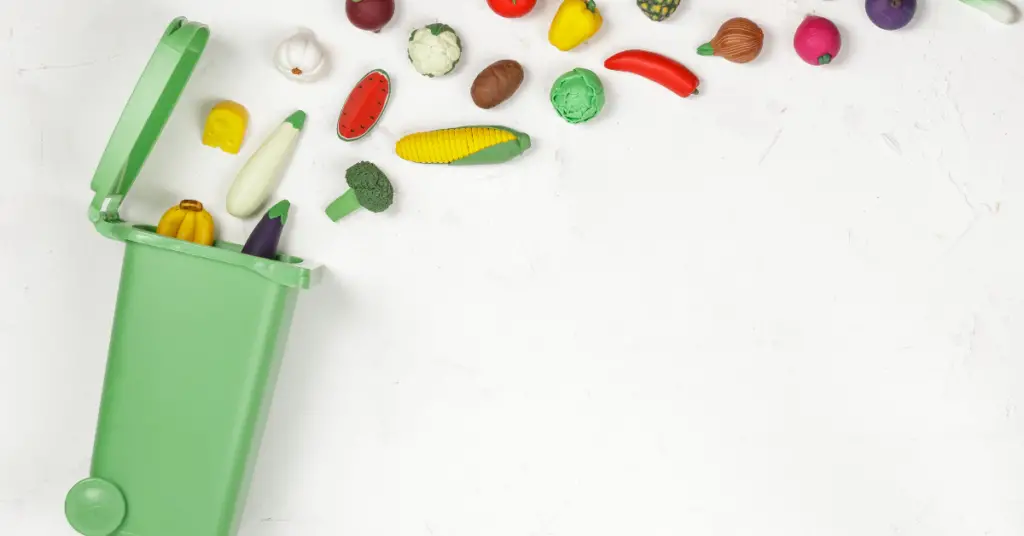Reduce wastage of food
Beyond rotating staples, there are other ways of reducing food waste. We talked about arming ourselves with shopping lists before arriving at the market, but serving small portions, reheating leftovers, and using freezing methods you can further reduce the amount of unused/spoiled food that ends up in the compost.
You can for example freeze herbs in ice cube trays or separate leftovers into smaller lunch-size portions in glass jars and freeze them. Even the most dedicated Zero Waste kitchen generates some compostable waste. Here is my A-to-Z list for addressing those items that might fall through the cracks:
Add it: Leftover squash can make a great addition to savory pancakes. Or try using some of the water used for cooking pasta in your pasta sauce.
Bake it: My family is not enthusiastic about eating kale in general, but they love kale chips. Bake on a sheet with a drizzle of olive oil and salt for ten minutes at 350 degrees.
Collect it: I keep a jar in my freezer to collect bits of stale bread. When the jar is full, I make bread pudding.
Dehydrate it: You can use a dehydrator, but sun and air-drying are most economical; I tie herbs in small bundles and let them air-dry indoors (the attic is ideal) to retain maximum color and flavor. Dried, ground celery leaves plus salt equals celery salt!
Edit it: My kids don’t like raisins in their cereal; I remove them from their breakfasts and add them to a cookie recipe instead.
Ferment it: Leftover wine or fruit scraps are ideal for making vinegar at home.
Grate it: Grated apples can make a wonderful addition to salads, and grated stale bread (bread crumbs) is wonderful on veggies or casseroles.
Hang it: If yogurt passes its expiration date and is not moldy, I season it and hang it above the sink in a handkerchief to make a soft cheese (but you knew that already).
Ice it: Wilted lettuce can be revived in a bath of ice water.
Juice it: Do not compost carrot tops; mix them with your green smoothie.
Knife it: When we have too much fruit, I cut it up and put it on a plate, and it magically gets eaten!
Ladle it: The day before my grocery run, I throw all leftover veggies in a pot with water and chicken bones and make soup. The artichoke leaves and pea shells discard also make great bases to cream soups.
Marinade it: I learned from my mom to macerate extra grapes or dried fruit in brandy for a few months (sometimes years). It makes one potent dessert.
Neutralize it: If you are thinking of ditching your dish because it is too spicy, add lemon, dairy, alcohol, or sugar. Too sweet? Try salt, vinegar, or lemon. Too salty? A splash of white vinegar and pinch of sugar should tone it down. Too sour? Add baking soda.
Offer it to friends, school, food bank: If you overestimated your cooking or harvest, make someone happy with the extras. Everyone likes a surprise donation of Meyer lemons.
Preserve it: Ripe fruit can be turned into jam and extra veggies pickled.
Question it: Google will tell you what to do with your leftover.
Reinvent it: Use scraps of ham to flavor a pea soup, or bruised apples to make applesauce (you can also turn the sauce into fruit leather)!
See it: Proper storage is important to extend the life of your leftovers. The transparency of the canning jars that we use prevents foods from getting forgotten.
Thicken (or thin) it: Sometimes soups or sauces linger in the refrigerator because the texture is too runny or too thin. Using cornstarch to thicken or water to thin a soup will make all the difference.
Use it all: Not peeling is a great way to get the most out of your produce. .But if you detach the broccoli rod (which is usually deleted), you can add it to your recipe.
Vamp it up: I love throwing a cocktail party around leftovers. It’s a fun way to clear out a fridge before a grocery run. Leftover pizza can be portioned into bite sizes, and small meat or grain mixtures can be scooped into endive leaves, mushrooms, spoons, or small glasses.
Cake trimmings and leftovers can be layered with whipped cream and fresh fruit to make a trifle. In France, they call this vamping up the art of “bluffing.”
Wet it: : Sprinkle a damp baguette with water and cook to revive it.

Erzsebet Frey (Eli Frey) is an ecologist and online entrepreneur with a Master of Science in Ecology from the University of Belgrade. Originally from Serbia, she has lived in Sri Lanka since 2017. Eli has worked internationally in countries like Oman, Brazil, Germany, and Sri Lanka. In 2018, she expanded into SEO and blogging, completing courses from UC Davis and Edinburgh. Eli has founded multiple websites focused on biology, ecology, environmental science, sustainable and simple living, and outdoor activities. She enjoys creating nature and simple living videos on YouTube and participates in speleology, diving, and hiking.

